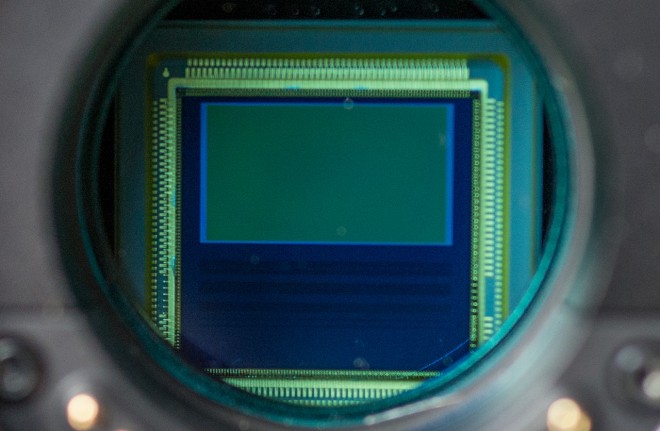
It’s an open secret that the Blackmagic Cinema Camera was based around a sCMOS sensor from Fairchild Imaging. Now the company has announced it’s successor, the sCMOS 2.0
sCMOS technology have powered Blackmagic’s cameras so far (aside from the 4K Production Camera which is expected to be based around a sensor from Belgian company CMOSIS).
There are currently two sCMOS sensors and the Pocket camera used one, the BMCC the other.
The specs of the sensors were pretty much identical but the larger sensor clocked in at 2.5K. Model numbers are –
- Pocket Cinema Camera = CIS 1910F
- Blackmagic Cinema Camera = CIS 2521F
These sensors were capable of up to 100fps and dynamic range was 13 stops (88db). Of course 100fps was not implemented by Blackmagic as that would take a Red Epic like ASIC to handle and a considerable price bump.
Starting June 2014 Fairchild Imaging are rolling out sensors based on the new pixel design, sCMOS 2.0.
From a basic reading of the specs sheet there doesn’t seem to be any eye-catching improvements. Dynamic range seems identical (87db) as does the maximum frame rate but this is just one sensor and I’m expecting more designs to follow. The shutter remains a rolling one (not global). Here’s the press release from Fairchild Imaging…
The first product that incorporates sCMOS2.0 technology is the SCI2020. It is a large format, ultra-low noise CMOS image sensor intended for applications requiring high quality imaging under extremely challenging light conditions. Utilizing a four transistor (4T), 6.5um pixel architecture, the SCI2020 delivers >80% quantum efficiency and a 25 times reduction in blinking, or higher than mean pixel read noise. The sensor has two ADC channels per column enabling intra-scene high dynamic range of over 90dB and operates at 100fps at full sensor resolution.
“We are very excited to introduce sCMOS2.0 technologies to the market,” stated Vern Klein, Director of Marketing for Fairchild Imaging. “The SCI2020 significantly improves upon the current industry leading CIS2020. This is our first chip based on sCMOS2.0 technologies that will improve light gathering capabilities as well as deliver advanced noise tail management technologies which are critical to the next generation of scientific cameras. This sensor can output 4.2 megapixel frames at 100 frames per second and still deliver very low read noise and exceptional dynamic range.”
sCMOS sensors utilize efficient light collection and sophisticated low noise circuits to deliver images in low light situations where other imagers cease to be useful. High intra-scene dynamic range, without the need for multiple shots over time, is made possible by an innovative dual digitizer approach combined with deep full well capacity. High frame rates, useful for monitoring dynamic events and performing inter-scene image processing, such as noise reduction and image stabilization, are generated by wide parallel processing and multiple high capacity ADCs.
The new sensor is 2K instead of 1080p (it’s actually square, at 2048 x 2048). Size is 13mm x 13mm.
From the information release so far I’m expecting an HDR mode with hardware support… by my reckoning, “intra-scene dynamic range” sounds similar to the way the Alexa sensor has a dual-gain output. The mention of dual digitizer in the press release would seem to point in that direction, as do twin analogue to digital converters (2x 11bit ADC). Maybe I’m wrong, as I’m not an engineer!
I’m not expecting 100fps slow-mo on the next Blackmagic cameras because this depends so much on the image processor. It’s difficult for Blackmagic to keep the price consumer if they are doing 100fps 10bit ProRes!
Big question is – will Fairchild Imaging go beyond the 2.5K sCMOS v1.0 with the new technology and give the scientific market a larger sized 4K sensor? That would be fantastic for Blackmagic.
Specs of the first new sCMOS 2.0 sensor:
- > 87 db intra-scene dynamic range
- 100fps at full resolution
- < 2e read noise
- 2048 x 2048 resolution
- 13 x 13mm sensor size (for reference GH4 is 17 x 13)
- 6.5 um pixel size
- Rolling shutter
- 22bit ADC (2x 11bit)
- Column level amp gain – High 30x or 10x. Low 2x or 1x.
- Power consumption < 1.5w at 100fps
- Dark current < 25 e-/pixel/sec (25 degrees c)
- Peak QE > 80%
- Full well capacity > 30,000 e-
- Data format 2 x 11bit
Perhaps these new sCMOS 2.0 chips have a feature I’ve missed? Calling all CMOS scientists to tell us what this may be…


